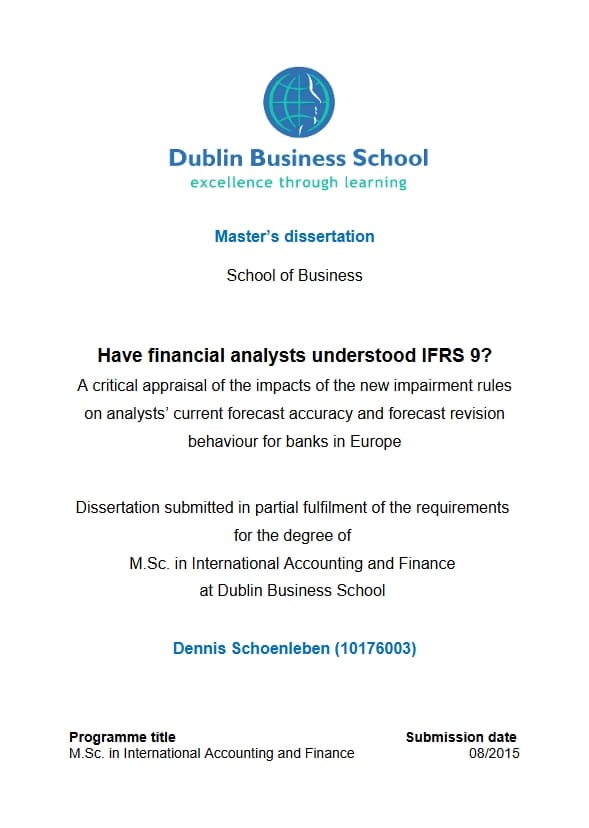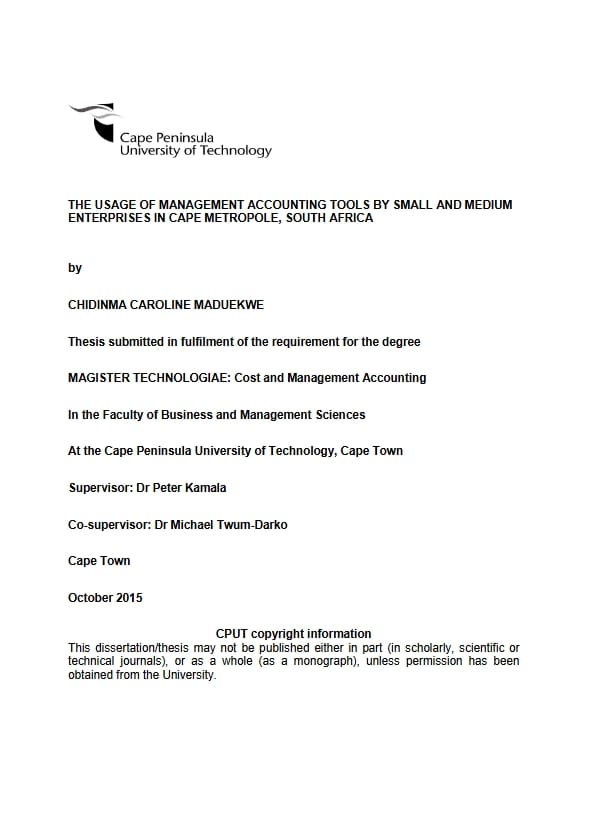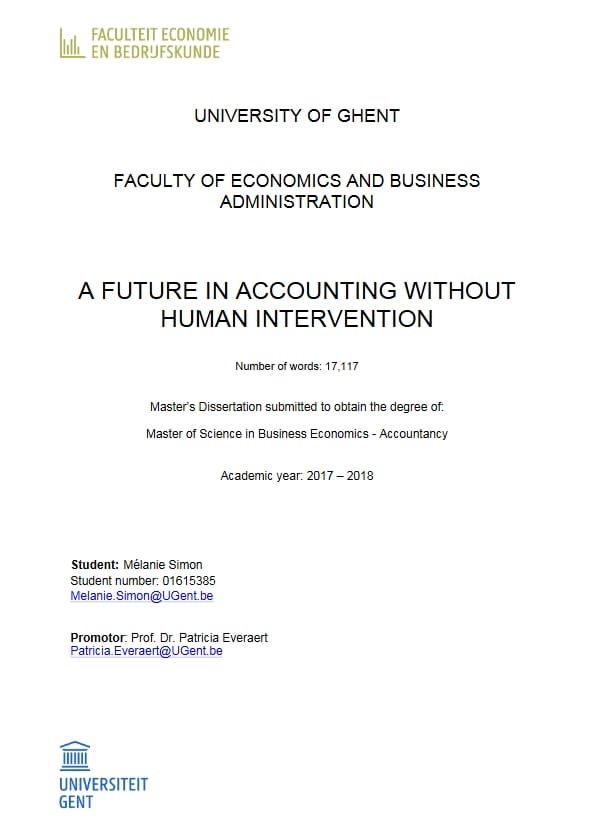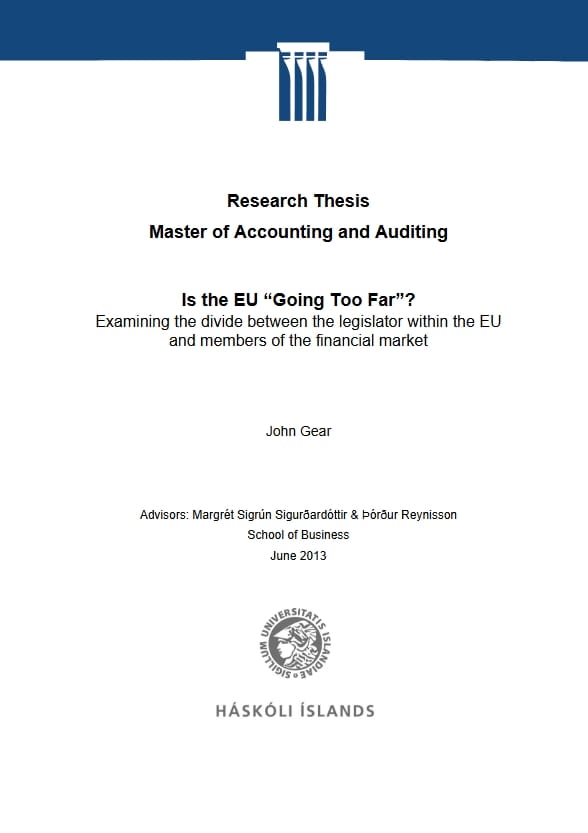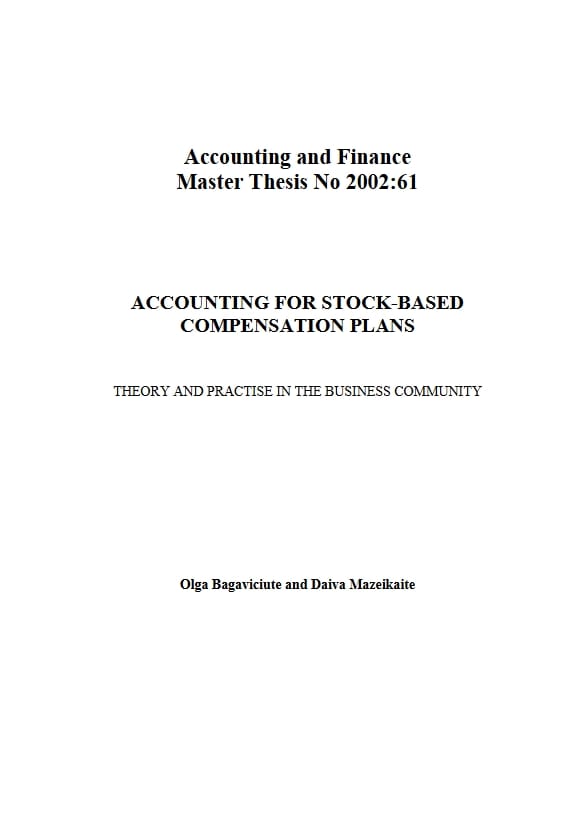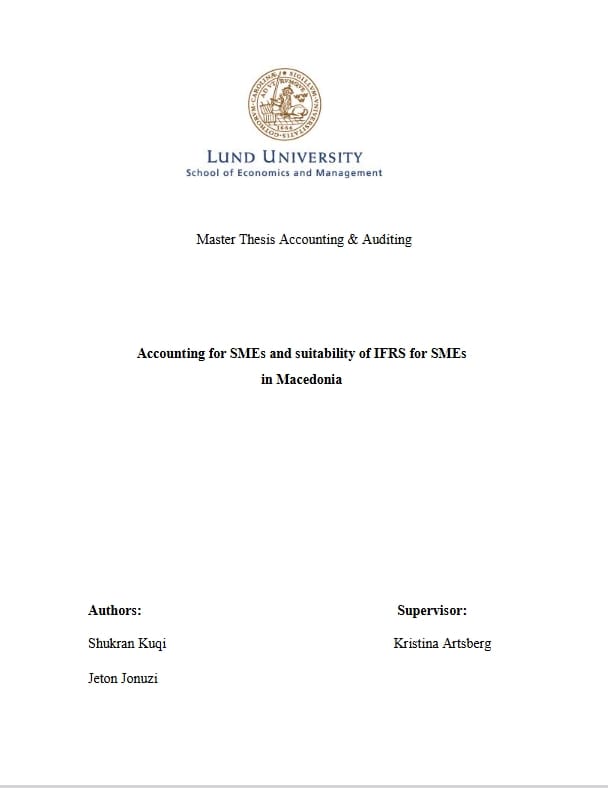Table of Contents
Declaration……………………………………………………………………………………………………………. II
Table of Contents………………………………………………………………………………………………….. III
List of Tables ……………………………………………………………………………………………………….. VI
List of Figures ………………………………………………………………………………………………………. VI
Acknowledgements ………………………………………………………………………………………………. VII
Abstract……………………………………………………………………………………………………………… VIII
List of abbreviations ………………………………………………………………………………………………. IX
CHAPTER ONE: Introduction…………………………………………………………………………………… 1
CHAPTER TWO: Literature Review ………………………………………………………………………….. 6
2.1 Literature Introduction …………………………………………………………………………………….. 6
2.2 The Role of Analyst’ Forecasts in Capital Markets ………………………………………………. 6
2.3 Influential Factors on Analyst’ Forecasts ……………………………………………………………. 7
2.4 Relevance of Accounting Information to Analyst Forecasts …………………………………. 10
2.4.1 Accounting Data and Analyst Forecasts …………………………………………………… 10
2.4.2 Accounting Standard Changes and Analyst Forecasts ……………………………….. 10
2.4.2.1 Individual Accounting Standard Changes and their Implications
on Analyst Forecasts …………………………………………………………………… 10
2.4.2.2 Multiple Accounting Standard Changes and the Implications for
Analyst Forecasts ……………………………………………………………………….. 11
2.5 IFRS 9 versus IAS 39 Impairment Rules ………………………………………………………….. 13
2.5.1 Conceptual Review of the Incurred Loss Model (IAS 39)…………………………….. 14
2.5.2 Conceptual Review of the Expected Loss Model (IFRS 9) ………………………….. 18
2.5.3 Discussion about Implications of the Change in the Impairment Model
on Analyst Forecasts ……………………………………………………………………………. 23
2.5.4 Anticipated Effects from the New Impairment Rules on Banks’ Loss
Allowances …………………………………………………………………………………………. 25
2.6 Literature Conclusion ……………………………………………………………………………………. 28
CHAPTER THREE: Methodology……………………………………………………………………………. 29
3.1 Methodology Introduction ………………………………………………………………………………. 29
3.2 Research Design …………………………………………………………………………………………. 30
3.2.1 Research Philosophy ……………………………………………………………………………. 30
3.2.2 Research Approach ……………………………………………………………………………… 31
3.2.3 Research Strategy ……………………………………………………………………………….. 32
3.2.4 Sampling – Selecting Entities and Forecasts …………………………………………….. 33
3.3 Research Ethics …………………………………………………………………………………………… 37
3.5 Limitations of Methodology ……………………………………………………………………………. 38
3.6 Methodology Conclusion ……………………………………………………………………………….. 40
CHAPTER FOUR: Data Analysis/Findings ……………………………………………………………….. 41
4.1 Researcher’s Forecasts ………………………………………………………………………………… 41
4.2 Hypothesis 1 ……………………………………………………………………………………………….. 51
4.3 Hypothesis 2 ……………………………………………………………………………………………….. 55
4.3.1 Analysts’ Credit Risk Forecast Accuracy ………………………………………………….. 55
4.3.2 Analysts’ EPS Forecast Accuracy …………………………………………………………… 58
CHAPTER FIVE: Conclusion / Discussion / Recommendations …………………………………… 64
5.1 Discussion of Hypothesis 1 ……………………………………………………………………………. 66
5.2 Discussion of Hypothesis 2 ……………………………………………………………………………. 67
5.3 Overall Conclusion ……………………………………………………………………………………….. 67
5.4 Classification of Research Findings in the Literature and Recommendations …………. 68
CHAPTER SIX: Self-Reflection on Learning and Performance ……………………………………. 70
6.1 Self-Appraisal ……………………………………………………………………………………………… 70
6.2 Problem-Solving…………………………………………………………………………………………… 72
6.3 Summary of Added Value ……………………………………………………………………………… 74
Bibliography ………………………………………………………………………………………………………… 75
Appendices …………………………………………………………………………………………………………. 91
Appendix 1: Ranking of the largest significant banks in Europe that prepare
their financial statements in accordance with IFRS………………………………… 91
Appendix 2: Analysts’ EPS forecast revisions for the forecast years 2015 and
2016, over the period July 2014 – July 2015 (1/3) …………………………………. 92
Appendix 3: Analysts’ consensus EPS forecasts for the forecast years
2015 – 2018 on 7th August 2015 (1/2) ………………………………………………… 95
Appendix 4: Analysts’ consensus credit risk forecasts for the forecast years
2015 – 2017 on 7th August 2015………………………………………………………… 97
Appendix 5: Research timetable ………………………………………………………………………….. 98
Appendix 6: Assignations of banks’ businesses to categories within conducted
studies……………………………………………………………………………………………. 99
Appendix 7: Abstract of information utilised from HSBC’s 2014 financial
statements ……………………………………………………………………………………. 100
Appendix 8: Abstract of information utilised from Barclays’ 2014 financial
statements (1/2) …………………………………………………………………………….. 101
Appendix 9: Abstract of information utilised from Deutsche’s 2014 financial
statements (1/2) …………………………………………………………………………….. 103
Appendix 10: Abstract of information utilised from BNP Paribas’ 2014 financial
statements (1/2) …………………………………………………………………………….. 105
Appendix 11: Abstract of information utilised from Credit Agricole’s 2014 financial
statements ……………………………………………………………………………………. 107
Appendix 12: Events occurring in months where significant analysts’ EPS
forecast revisions took place, and their presumed effects on
analysts’ forecasts ………………………………………………………………………….. 108
Appendix 13: Credit risk forecast differences expecting minimal transitional
impacts on loan loss reserves with the introduction of the IFRS 9
impairment rules …………………………………………………………………………….. 108
Appendix 14: Credit risk forecast differences expecting average transitional
impacts on loan loss reserves with the introduction of the IFRS 9
impairment rules …………………………………………………………………………….. 109
Appendix 15: Analyst forecasts of credit risk positions for the years 2015 -2017
and the banks’ reported figure as at 31.12.2014………………………………….. 110
Appendix 16: EPS forecast differences expecting minimal transitional impacts on
loan loss reserves with the introduction of the IFRS 9 impairment
rules …………………………………………………………………………………………….. 111
Appendix 17: EPS forecast differences expecting average transitional impacts
on loan loss reserves with the introduction of the IFRS 9
impairment rules …………………………………………………………………………….. 112
Appendix 18: Analysts’ EPS forecasts for the years 2015 -2018 and the
banks’ reported figure as at 31.12.2014 …………………………………………….. 113

